Documenting the Landscape of Natural Burial through Time
“Without these regular visits and my familiarity with this landscape I might not have noticed the grave which each year, on the date of birth and death, is clothed in a carpet of rose petals”
Earlier this week I went on my monthly pilgrimage to the South Yorkshire Woodland burial ground near to the Village of Ulley. It is very different to a traditional cemetery; headstones are replaced by memorial trees and the grass is only cut once each year. The site is owned by a local independent funeral director, Peace Funerals, who established the burial ground in 1995 after buying a small field of approximately one hectare. Today, walking along the lane which runs beside the burial ground, looking over the earth bank and field hedge which border the site, you can see a small mixed woodland of predominantly native but also more exotic, ornamental trees. Over time the trees have gradually colonized this landscape, as with each new burial an additional memorial tree is added to the woodland mix.
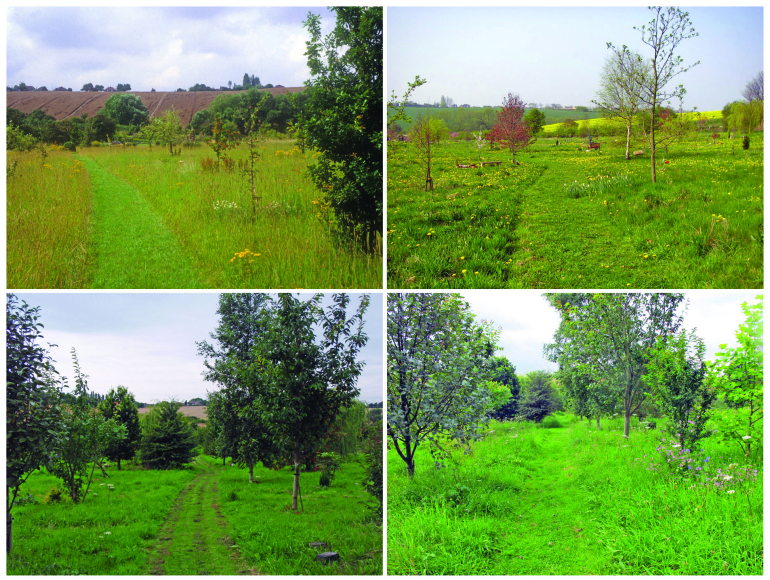
I first began visiting the burial ground and recording my visit in photographs back in December 2007 as part of an ESRC funded research project which was investigating the cultural, social and emotional implications of this new burial form. At that time I had no intention of maintaining my monthly visits beyond the three-year life of the research project. However, when the project ended I felt compelled to keep returning to the burial ground and so I continue to maintain my photographic record.
On reflection I am pleased I took this decision. It has helped me to develop my understanding of how this burial ground continues to be shaped by the ecological process that are at play, but perhaps more importantly, how its community of users put their own distinctive marks on this landscape, often in very subtle and ephemeral ways. Without these regular visits and my familiarity with this landscape I might not have noticed the grave which each year, on the date of birth and death, is clothed in a carpet of rose petals; or the clusters of bluebells that each spring once enclosed a grave but no longer do so as new burials have now encroached on this space. In the book Materialities of Passing the chapter ‘Temporalities of transience and the mortuary landscape’ explores many of the activities I have observed reveal how bereaved people can engage positively with this rapidly changing landscape but also how some people actively resist the encroachment of wilder nature, by, for example, carefully cutting back the tall grass surrounding the grave.
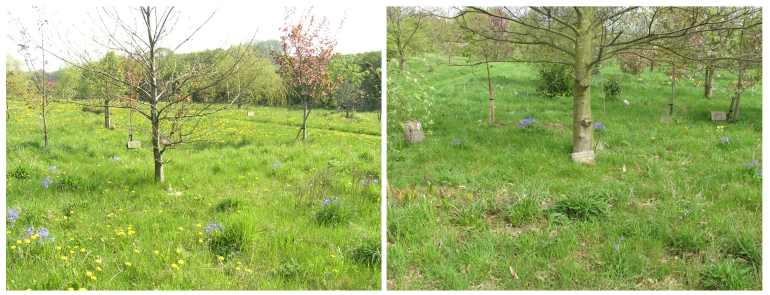 The circle of blue bells that once encircled the grave and memorial oak tree each spring have now been lost as more recent burials have gradually filled this space.
The circle of blue bells that once encircled the grave and memorial oak tree each spring have now been lost as more recent burials have gradually filled this space.
As a landscape designer these regular visits have added to my understanding and appreciation of how quickly the character and feel of the landscape can change. Looking back through the photographic record I am struck by how much the woodland has grown in just seven years and especially by how, in early summer, the grasses and wildflowers can put on over a metre of growth between my visits and hide all evidence of recent burials. I have started to become increasingly aware that my photographs priorities a visual record of this landscape but say nothing about how this place can be experienced through sound, smell and touch. In an effort to address this shortcoming I have now started to take short video clips which capture some of the sounds and bird song that often fill this landscape.
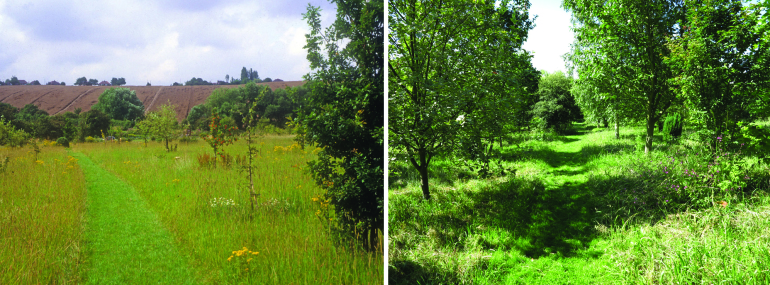 These two images show the change that has taken place since I first visited the burial ground in 2002 and how it looked last summer.
These two images show the change that has taken place since I first visited the burial ground in 2002 and how it looked last summer.
Looking forward I am interested in applying the findings from our research into natural burial to the design and management of more traditional cemetery landscapes. Our cemeteries could potentially make a much greater contribution to addressing some of the challenges posed by climate change and loss of habitat. The demand for natural burial suggest that there is already an appetite for a very different kind of landscape where there is much greater contact with the natural world. At a time when local authorities are having to cut their spending on maintaining cemeteries there may be significant savings to be made by reducing or eliminating mowing and letting a wilder nature return to these landscapes. Whilst still respecting the needs of bereaved people and maintaining a much needed sanctuary from the hectic life of the city. These, along with other ideas around the re-use of graves, increased functionality and better integration with the wider landscape, are currently being explored by third year landscape architecture students as they reimagine the future of our cemeteries.
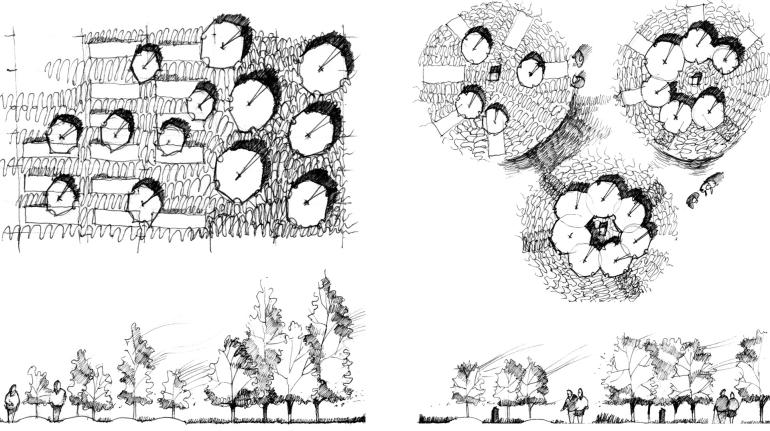
Different approaches at natural Burial sites to arranging and planting graves shapes the character of the emerging woodland and users experience these landscapes.
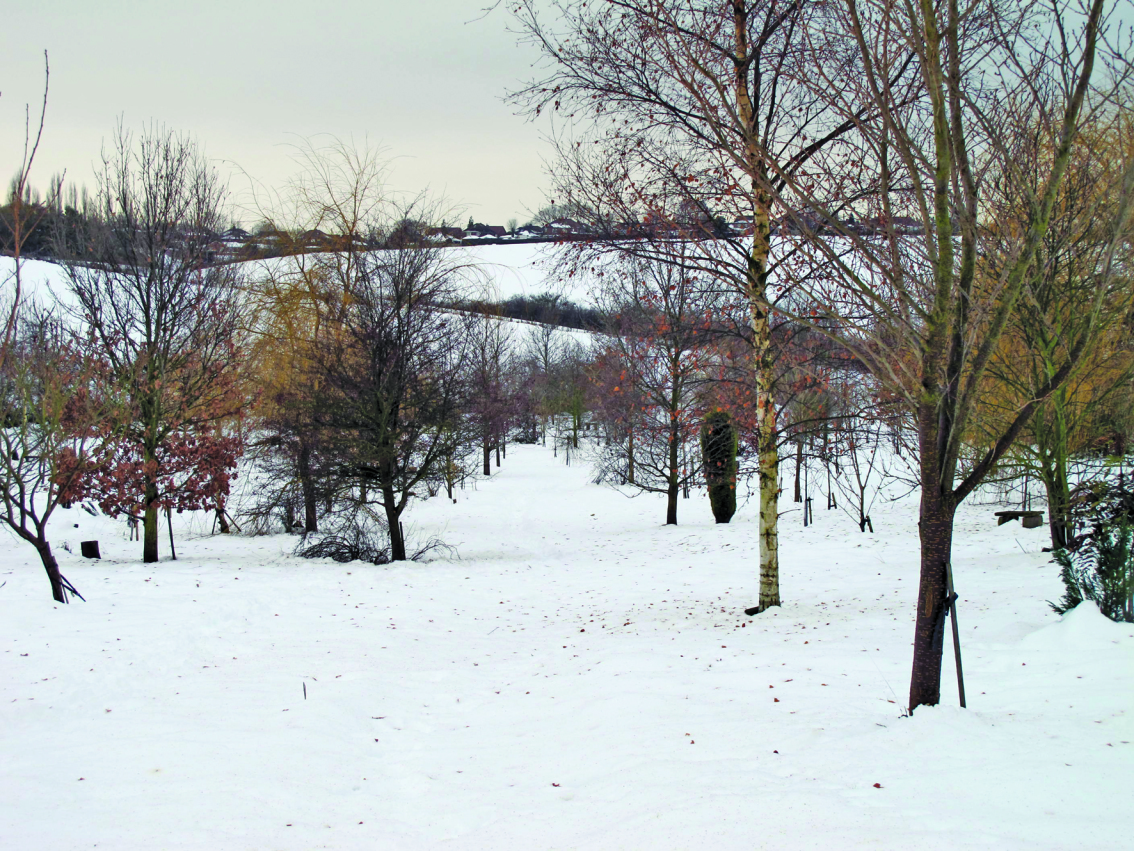

I am considering pre purchasing a double plot at the Ulley burial ground and visited again yesterday. Seeing how the landscape and the size and number of trees have grown so much since my last visit a few years ago, I am now concerned that the woodland will become too dark and dense in future and that woodland flowers may not be able to grow fr lack of sunlight. Further, would the ground be left for brambles to take over, as they have in the woods near my home? I would appreciate your view on this, please. Thank you.
LikeLike
Hi Andrea
Inevitably the character of the woodland and species mix will change over time as the trees become more established and new planting is added to this mix. Over the ten year that I have been recording this site I have seen dramatic change from the open field with isolated, small trees to what we experience today. How the site continues to evolve will inevitable be determined by how it is managed in future and to some degree how actively this space is used and visited. At the moment the understory is cut back each year which suppresses competition from some of the more aggressive species. For the first time, this year there has also been more active management of woodland which has included lifting the crowns of many of the trees to let in more light and improve access. You may have seen some of the habitat piles of cut logs that were left as part of the woodland management. I am also aware that Peace Funerals have adapted their service in recent years and that some graves do not include any tree planting or there are restrictions on what can be planted.
I don’t recall seeing much bramble on site and whilst I understand that if it were to become too dominant that it may limit access but it can also provide excellent habitat.
Kind regards, Andy
LikeLike